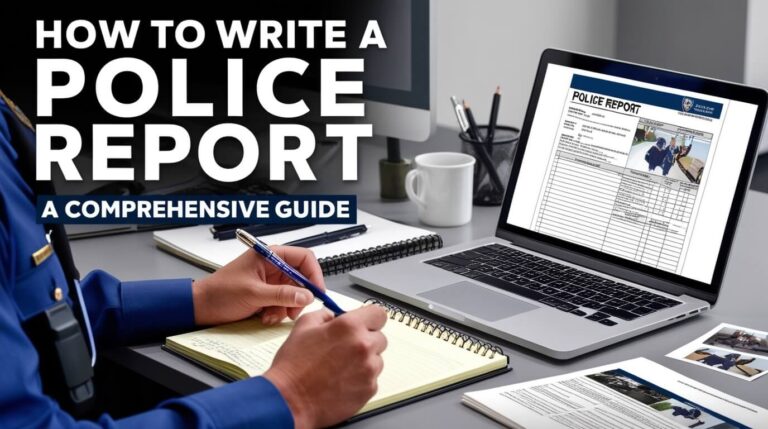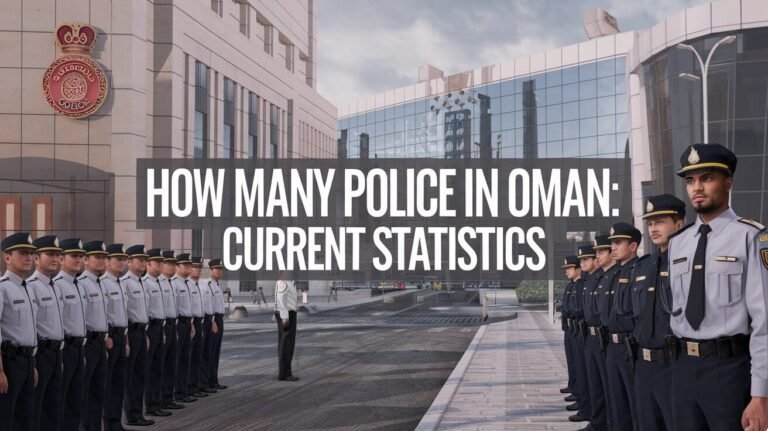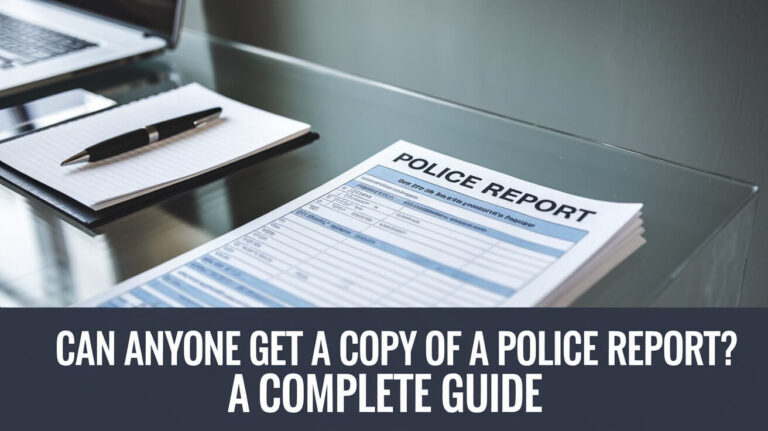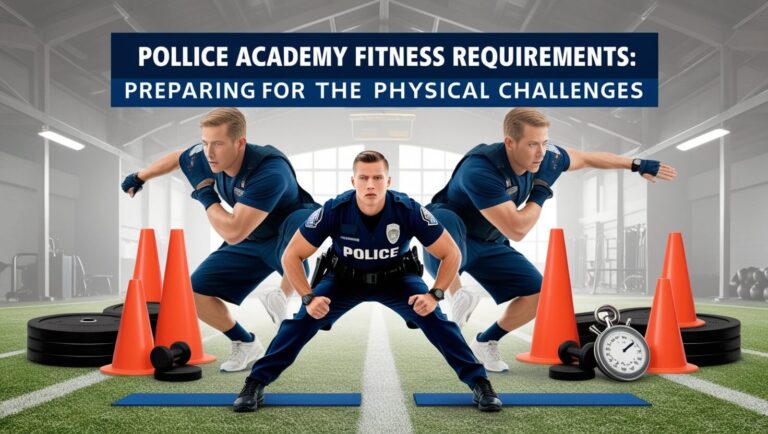What Does a Police Report Look Like? Essential Guide
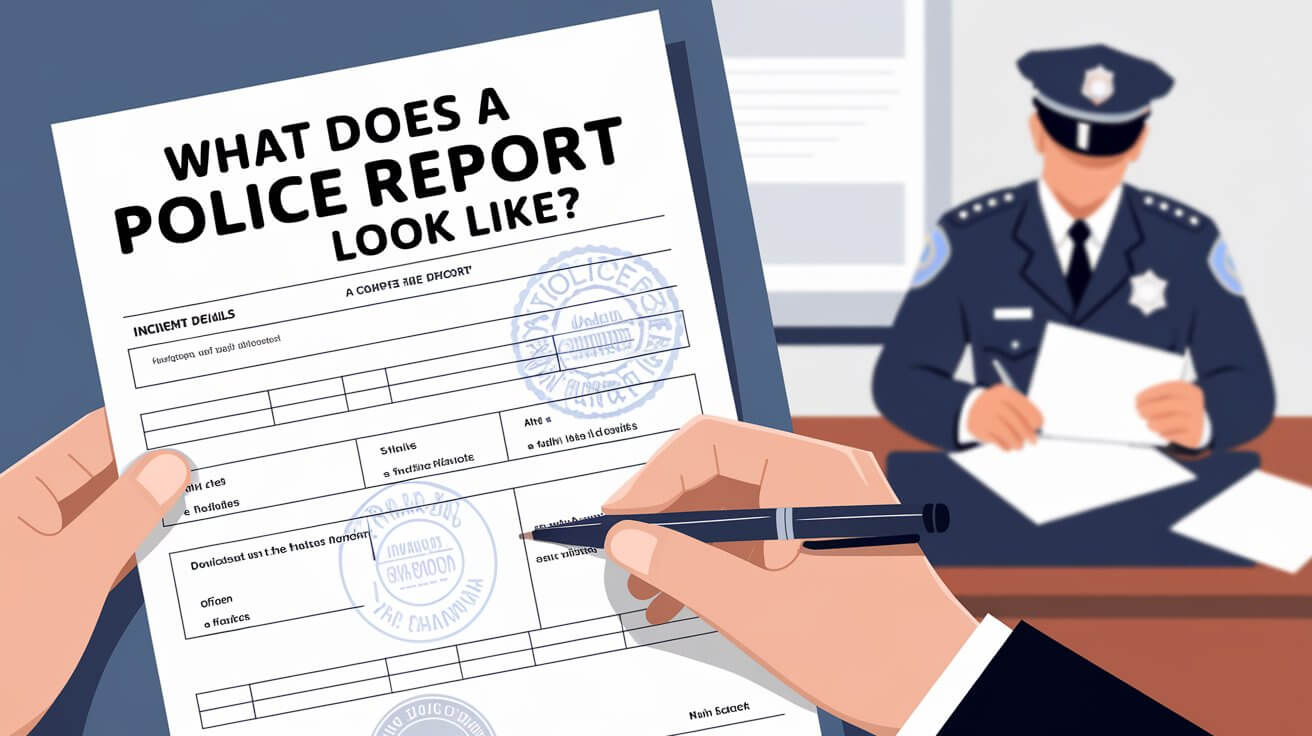
Police reports are crucial documents in law enforcement, serving as official records of incidents, crimes, and investigations. A police report typically looks like a structured document containing key information such as incident details, involved parties, witness statements, and officer observations. This guide will explore the various aspects of police reports, their components, and why they’re essential in the criminal justice system.
Introduction to Police Reports
Police reports are the backbone of law enforcement documentation. They provide a clear, factual account of events that officers respond to or investigate. These reports play a vital role in the justice system, serving as a reference for investigators, prosecutors, and other law enforcement personnel.
Definition and Purpose of Police Reports
A police report is an official document that records the details of an incident or crime. It’s created by law enforcement officers to capture essential information about what happened, who was involved, and what actions were taken. The main purposes of a police report are to:
- Document criminal activities or incidents
- Provide a basis for further investigation
- Serve as evidence in court proceedings
- Help in crime analysis and prevention strategies
Importance of Accurate Police Report Writing
Accuracy in police reports can’t be overstated. A well-written report can:
- Lead to successful prosecutions
- Protect the rights of victims and suspects
- Help solve related crimes
- Improve public trust in law enforcement
On the flip side, poorly written reports can hinder investigations, lead to case dismissals, or even result in wrongful convictions.
The Structure of a Police Report
Police reports follow a specific structure to ensure all necessary information is included and easily accessible. Let’s break down the main parts of a typical police report.
Header Information
The top of a police report usually contains:
- Department name and logo
- Report number
- Date and time of the incident
- Location of the incident
- Type of incident (e.g., burglary, assault, traffic accident)
- Reporting officer’s name and badge number
This header quickly gives readers key details about the report at a glance.
Narrative Section
The heart of the police report is the narrative section. Here, the officer describes what happened in a clear, chronological order. This section typically includes:
- How the officer became aware of the incident
- What the officer observed at the scene
- Actions taken by the officer
- Statements from victims, witnesses, and suspects
- Description of any evidence collected
The narrative should paint a vivid picture of the incident without including personal opinions or unnecessary details.
Supplementary Sections
Depending on the nature of the incident, a police report may include additional sections such as:
- Victim information
- Suspect description
- Property inventory
- Injury reports
- Diagram of the scene
These sections provide more detailed information that may be crucial for follow-up investigations or court proceedings.
Key Elements Found in Police Reports
To fully understand what a police report looks like, it’s important to know the key elements it contains. Let’s explore these in detail.
Incident Details
This section provides a comprehensive overview of the event, including:
- Date, time, and location of the incident
- Nature of the call or reason for police response
- Weather conditions (if relevant)
- Any unusual circumstances
Accurate incident details set the stage for the entire report and help readers understand the context of the event.
Involved Parties Information
Police reports list all individuals involved in the incident, such as:
- Victims
- Suspects
- Witnesses
- Reporting parties
For each person, the report typically includes:
- Full name
- Date of birth
- Contact information
- Physical description
- Role in the incident
This information is crucial for follow-up investigations and potential court proceedings.
Witness Statements
Witness accounts are vital in many cases. The police report should include:
- Summaries of witness statements
- Direct quotes when appropriate
- Contact information for follow-up
Officers strive to capture witness statements as accurately as possible, as they can provide crucial details about the incident.
Evidence Documentation
Any evidence related to the incident is carefully documented in the police report. This may include:
- Physical evidence collected at the scene
- Photographs or videos
- Forensic findings
- Location and condition of evidence when found
Proper documentation of evidence is critical for maintaining the chain of custody and ensuring its admissibility in court.
Officer Observations and Actions
The report also details what the responding officers saw and did. This includes:
- Initial observations upon arrival
- Actions taken to secure the scene
- Interactions with involved parties
- Any use of force or arrests made
These details provide insight into the officer’s decision-making process and the steps taken to address the situation.
Types of Police Reports
Police reports come in various forms, depending on the nature of the incident. Understanding these different types can help you better grasp what a police report looks like in various situations.
Incident Reports
Incident reports are the most common type of police report. They document a wide range of events, from minor disturbances to serious crimes. These reports typically include:
- A brief summary of the incident
- Details of what happened
- Information about all parties involved
- Any immediate actions taken by officers
Incident reports serve as the starting point for many investigations and provide a record of police activity in the community.
Arrest Reports
When an arrest is made, officers complete an arrest report. This document includes:
- Probable cause for the arrest
- Miranda rights advisement
- Suspect’s behavior during arrest
- Any evidence seized during the arrest
- Booking information
Arrest reports are crucial for prosecutors when deciding whether to file charges and how to proceed with a case.
Traffic Accident Reports
These reports document vehicle collisions and include:
- Diagram of the accident scene
- Vehicle information for all parties involved
- Statements from drivers and witnesses
- Injuries sustained and medical treatment provided
- Citations issued, if any
Traffic accident reports are often used by insurance companies and in civil lawsuits to determine liability.
Crime Scene Reports
For serious crimes, officers create detailed crime scene reports. These typically contain:
- Comprehensive description of the crime scene
- Evidence collected and its location
- Forensic findings
- Photographs and sketches of the scene
- List of all personnel who entered the scene
Crime scene reports are essential for major investigations and often play a crucial role in solving complex cases.
Formatting Guidelines for Police Reports
The way a police report is formatted can greatly affect its readability and usefulness. Here are some key formatting guidelines that shape what a police report looks like.
Writing Style and Tone
Police reports should be:
- Objective and factual
- Clear and concise
- Free from personal opinions or biases
- Written in active voice when possible
The tone should be professional and neutral, focusing on presenting information rather than making judgments.
Paragraph Structure
To enhance readability, police reports typically use:
- Short paragraphs (2-3 sentences)
- Topic sentences to introduce new ideas
- Logical flow from one paragraph to the next
This structure makes it easier for readers to quickly find and understand specific information within the report.
Use of Headings and Subheadings
Many police reports use headings and subheadings to organize information. This might include sections like:
- Initial Contact
- Victim Statement
- Suspect Description
- Evidence Collected
- Officer Actions
These headings help readers navigate the report and locate specific details quickly.
Common Sections in a Police Report
While the exact layout may vary between departments, most police reports contain similar sections. Let’s explore what these sections typically look like.
Synopsis or Executive Summary
This brief section provides an overview of the entire incident. It usually includes:
- Type of incident
- Date and time
- Location
- Brief description of what happened
- Key parties involved
The synopsis helps readers quickly understand the nature of the incident without reading the entire report.
Detailed Narrative
The narrative is the meat of the report, providing a chronological account of the incident. It typically includes:
- How the officer became aware of the incident
- What the officer observed upon arrival
- Actions taken by the officer and other first responders
- Statements from involved parties
- Description of evidence collected
A well-written narrative provides a clear picture of the event and the officer’s response.
Victim/Witness Statements
This section documents accounts from victims and witnesses. It often includes:
- Direct quotes when possible
- Summaries of longer statements
- Contact information for follow-up
Accurate recording of these statements is crucial for investigations and potential court proceedings.
Suspect Information
If a suspect is identified, this section provides details such as:
- Physical description
- Clothing worn during the incident
- Vehicle information (if applicable)
- Known associates or addresses
- Criminal history (if relevant)
This information is vital for ongoing investigations and potential arrests.
Property/Evidence List
This section catalogs any items related to the incident, including:
- Evidence collected at the scene
- Property stolen or damaged
- Weapons used in the crime
Each item is typically described in detail, including its condition and where it was found or stored.
The Process of Writing a Police Report
Understanding the process of creating a police report can provide insight into why these documents look the way they do. Let’s walk through the typical steps.
Gathering Information at the Scene
The report writing process begins at the incident scene. Officers:
- Secure the area
- Interview involved parties and witnesses
- Collect physical evidence
- Take photographs or videos
- Make detailed notes
Thorough information gathering is crucial for creating an accurate and comprehensive report.
Organizing Collected Data
Before writing, officers often organize their notes and evidence. This might involve:
- Reviewing body camera footage
- Sorting through witness statements
- Categorizing physical evidence
- Consulting with other responding officers
This step helps ensure all relevant information is included in the report.
Drafting the Report
When writing the report, officers typically:
- Start with the basic incident information
- Write a chronological narrative of events
- Include all relevant details from interviews and evidence collection
- Use clear, concise language
- Avoid personal opinions or unnecessary information
The goal is to create a factual, objective account of the incident.
Review and Submission
Before submitting, officers usually:
- Proofread for errors or omissions
- Have a supervisor review the report
- Make any necessary corrections or additions
- Submit the report through the department’s reporting system
This review process helps maintain the quality and accuracy of police reports.
Tips for Effective Police Report Writing
Creating clear, accurate police reports is a skill that officers continually refine. Here are some key tips that influence what a well-written police report looks like.
Clarity and Conciseness
Effective police reports are:
- Easy to understand
- Free from unnecessary details
- Written in plain language
- Organized logically
Clear writing ensures that anyone reading the report can quickly grasp what happened.
Objectivity and Impartiality
A good police report should:
- Stick to the facts
- Avoid personal opinions or biases
- Present all sides of the story fairly
- Use neutral language
Objectivity is crucial for maintaining the report’s credibility and usefulness in legal proceedings.
Chronological Order of Events
Presenting events in the order they occurred helps readers understand the incident. This involves:
- Starting with how the officer became aware of the incident
- Describing what happened step by step
- Ending with the officer’s final actions or observations
A chronological account provides a clear timeline of events.
Attention to Detail
Detailed reports are more useful for investigations and court proceedings. Officers should include:
- Specific times for key events
- Exact locations
- Precise descriptions of people and items
- Direct quotes when relevant
These details can be crucial in solving crimes or proving cases in court.
Technology and Police Reports
Modern technology has significantly impacted what police reports look like and how they’re created. Let’s explore some of these technological advancements.
Digital Report Management Systems
Many police departments now use computerized systems for report writing and management. These systems often:
- Provide templates for different types of reports
- Allow for easy searching and retrieval of reports
- Enable digital signatures and approvals
- Integrate with other law enforcement databases
Digital systems have streamlined the report writing process and improved information sharing between agencies.
Mobile Reporting Tools
Officers increasingly use mobile devices to create reports in the field. These tools allow officers to:
- Start reports immediately after an incident
- Upload photos and videos directly to the report
- Access department databases for information
- Complete reports without returning to the station
Mobile reporting has increased efficiency and accuracy in police report writing.
Integration with Other Law Enforcement Databases
Modern police reports often link to other databases, providing:
- Instant access to criminal histories
- Connection to vehicle registration information
- Integration with court records
- Ability to cross-reference with other cases
This integration helps officers create more comprehensive reports and aids in solving complex cases.
Legal Considerations in Police Report Writing
Police reports often play a crucial role in legal proceedings. Understanding the legal aspects can shed light on why these reports look the way they do.
Admissibility in Court
For a police report to be useful in court, it must:
- Be factual and objective
- Avoid hearsay (unless specifically noted)
- Document the chain of custody for evidence
- Be completed in a timely manner
Well-written reports can significantly impact the outcome of court cases.
Privacy and Confidentiality
Police reports often contain sensitive information. Officers must:
- Protect the privacy of victims and witnesses
- Handle juvenile information with extra care
- Follow department policies on information sharing
- Be aware of what information can be released to the public
Balancing transparency with privacy concerns is an ongoing challenge in police report writing.
Potential for Public Records Requests
Many police reports are subject to public records laws. This means:
- Reports may be requested by the media or public
- Certain information may need to be redacted
- Officers should write with the understanding that reports may be widely read
The potential for public scrutiny underscores the importance of accurate, professional report writing.
Common Mistakes to Avoid in Police Reports
Even experienced officers can make mistakes in report writing. Knowing these common pitfalls can help you understand what a well-written police report should look like.
Inconsistencies and Contradictions
Reports should be internally consistent. Common issues include:
- Conflicting times or dates
- Inconsistent descriptions of people or events
- Contradictions between the narrative and supplementary sections
Careful proofreading can help catch these inconsistencies before the report is submitted.
Omission of Critical Information
Leaving out important details can weaken a report. Officers should ensure they include:
- All relevant witness statements
- Complete descriptions of evidence
- Any use of force or injuries
- Actions taken by the officer
Comprehensive reports are more useful for investigations and court proceedings.
Use of Jargon or Unclear Language
While police work involves specialized terminology, reports should be understandable to a general audience. Issues to avoid include:
- Overuse of police codes or acronyms
- Vague or ambiguous statements
- Overly complex sentence structures
- Slang or colloquial expressions
Clear, straightforward language makes reports more effective and accessible.
The Impact of Well-Written Police Reports
The quality of police reports can have far-reaching effects. Let’s explore the impact of well-written reports on various aspects of law enforcement and community relations.
On Investigations and Case Outcomes
Good police reports can:
- Provide solid leads for detectives
- Support successful prosecutions
- Help solve cold cases
- Identify patterns in criminal activity
Thorough, accurate reports are often the foundation of successful law enforcement outcomes.
On Community Relations and Transparency
Well-written reports contribute to:
- Increased public trust in law enforcement
- Better understanding of police activities
- More accurate media reporting on incidents
- Improved accountability in policing
Clear, factual reports help bridge the gap between law enforcement and the communities they serve.
How to Obtain a Police Report
Understanding how to access police reports can be useful for various reasons. Let’s look at the process of obtaining these documents.
Requesting a Copy of Your Police Report
If you’ve been involved in an incident, you can usually request a copy of the police report. The process typically involves:
- Contacting the law enforcement agency that responded to the incident
- Providing identification and proof of involvement
- Paying a small fee for copying and processing
- Waiting for the report to be released (which may take several days)
Some departments offer online request systems, while others require in-person visits.
Understanding Report Accessibility and Restrictions
It’s important to note that not all information in a police report may be available to the public. Restrictions may apply to:
- Ongoing investigations
- Juvenile cases
- Sensitive victim information
- Confidential informant details
Departments balance the public’s right to information with the need to protect privacy and maintain the integrity of investigations.
Conclusion: The Crucial Role of Police Reports in Law Enforcement
Police reports are more than just paperwork – they’re vital tools in the criminal justice system. A well-written police report provides a clear, factual account of incidents, supports investigations, aids in prosecutions, and contributes to public safety.
Understanding what a police report looks like and how it’s created can help you appreciate the complexity of law enforcement documentation. Whether you’re a citizen involved in an incident, a student of criminal justice, or simply curious about police procedures, knowing the structure and content of police reports provides valuable insight into how law enforcement operates.
Remember, the next time you hear about a crime or incident in your community, there’s likely a detailed police report behind the scenes, documenting the facts and laying the groundwork for justice to be served.


